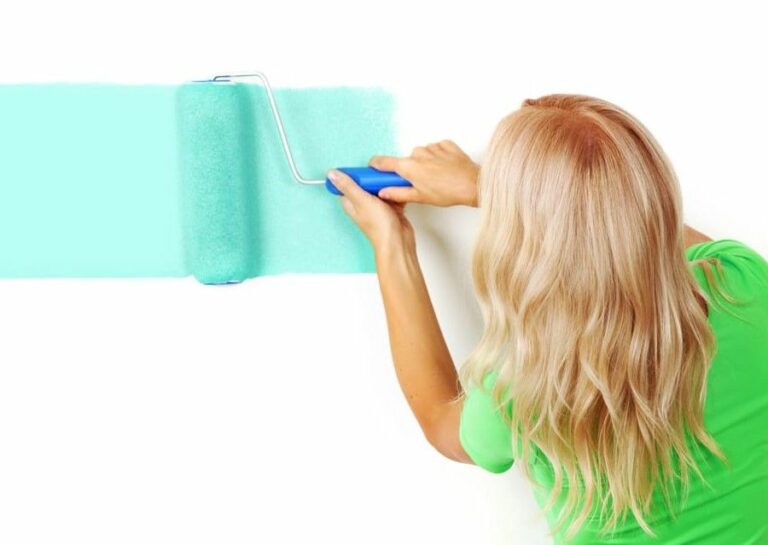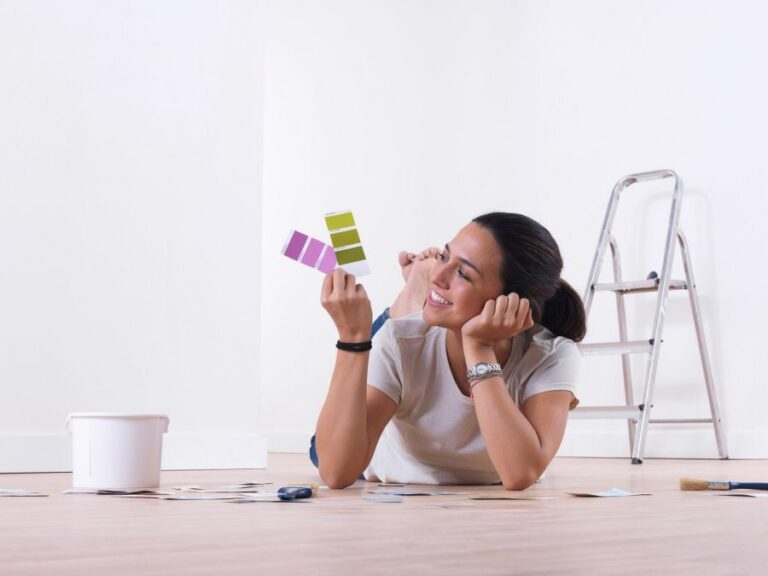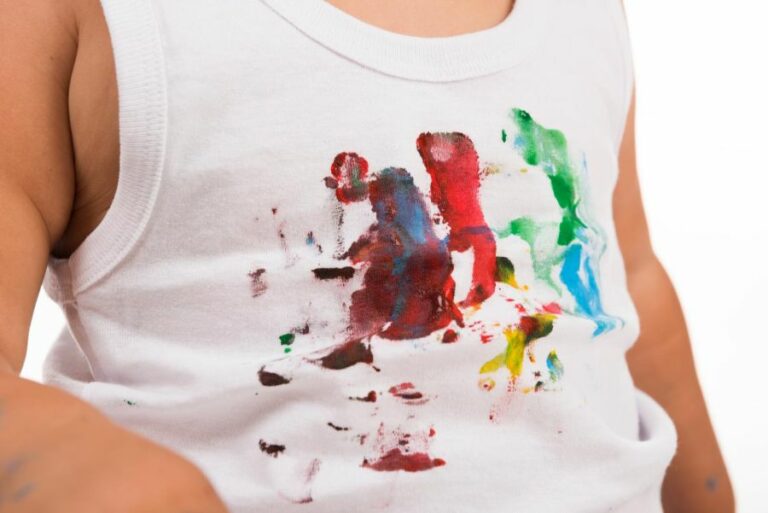How To Paint Outdoor Furniture, 25 Things You Should Know
Transform your outdoor space by giving your furniture a fresh, new look! This comprehensive guide on ‘How to Paint Outdoor Furniture’ offers easy-to-follow instructions, ensuring a professional finish even for beginners. Discover how to choose the right paint, the importance of proper cleaning and prepping, and the secrets to weatherproofing. In no time, you’ll witness your patio, porch, or garden come to life with vibrant hues and restored vitality.
How to paint outdoor furniture:
This comprehensive guide explains how to paint outdoor furniture by choosing the right paint, cleaning and preparing the surface, applying primer, painting, and adding a protective sealer. Key tips include using high-quality materials, working in well-ventilated areas with suitable weather conditions, and conducting a test patch before painting. With patience and proper technique, DIY enthusiasts can achieve a professional finish that refreshes outdoor living spaces for years.

Discover foolproof tips to enhance the appearance and longevity of your outdoor furniture. Learn about proper preparation, choosing appropriate materials, technique mastery, and essential maintenance that guarantees a stunning and durable paint job. Predict and tackle challenges like unpredictable weather!
Contents
- 1 A Comprehensive Guide on Painting Outdoor Furniture
- 2 What Type of Paint is Best Suited for Outdoor Furniture?
- 3 What is the Most Suitable Type of Paint for Outdoor Wooden Furniture?
- 4 Is it Possible to Paint Outdoor Furniture Without the Need for Sanding?
- 5 Comparing Methods: Is it More Effective to Spray or Paint Outdoor Furniture?
A Comprehensive Guide on Painting Outdoor Furniture
A fresh coat of paint can instantly breathe new life into old and tired outdoor furniture. I will cover the steps and materials required to paint your outdoor furniture and share some expert tips to ensure a smooth and lasting finish.
• Choosing the Right Paint
Selecting the appropriate paint is crucial for a successful DIY furniture painting project. Outdoor furniture is exposed to the elements and hence needs paint that can withstand harsh conditions. Here are some common types of paint you can use for outdoor furniture:
– Latex and Acrylic Paints
These water-based paints are ideal for outdoor furniture as they are durable, resistant to fading, and dry quickly. They can be used on various materials, including wood, metal, and plastic.
– Spray Paints
Spray paints are popular for their ease of application, and many are specifically formulated for outdoor furniture projects. They work well on various surfaces and can create a smooth, professional finish.
– Oil-Based Paints
Although less common for outdoor furniture, oil-based paints provide a durable and beautiful finish. They can be more challenging to work with and take longer to dry but are well-suited for intricate designs.
• Preparing Your Outdoor Furniture
Before you dive into painting your outdoor furniture, proper preparation is key to ensuring a smooth finish that will last for years.
– Cleaning
The first step is to thoroughly clean your furniture to remove dirt, debris, and mildew. Use a mixture of water, mild detergent, and a soft brush or cloth to clean all surfaces. Rinse the furniture with clean water and allow them to dry completely before moving on to the next step.
– Sanding
Sanding is a crucial step for wooden furniture or any surface with a glossy finish. It creates a rough surface for the paint to adhere to and helps remove any existing loose paint or material. Use medium-grit sandpaper (around 100-150 grit) and sand in the direction of the grain for wooden furniture. =
For metal or plastic furniture, use fine-grit sandpaper. Wipe the furniture clean with a damp cloth to remove sanding dust.
– Priming
Applying a primer is essential for outdoor furniture, as it helps the paint adhere better and creates a smoother finish. It also provides an extra layer of protection from the elements.
Choose a primer specifically designed for the material of your furniture and apply one or two coats, allowing it to dry according to the manufacturer’s instructions.
• Painting Your Outdoor Furniture
Now that your furniture is clean, sanded, and primed, it’s time to paint.
– Brush Painting
For large surfaces, a high-quality synthetic brush works well. It’s important to apply thin, even coats when using a brush, and be mindful of any drips or brush strokes as you paint. Allow each coat to dry before applying the next, and lightly sand in between coats to achieve a smooth finish.
– Spray Painting
Spray painting is an efficient way to achieve a quick and smooth finish on your outdoor furniture. When using spray paint, apply thin, even coats, and keep the can at a consistent distance from the surface (usually 8-12 inches). Allow each coat to dry before applying the next.
• Finishing Touches
If you desire an extra layer of protection and durability, applying a sealer or varnish on top of the paint can be beneficial. There are various types of sealers available, including water-based and oil-based options. Follow the manufacturer’s instructions for proper application and drying time.
Allow your painted furniture to dry completely before reassembling or using it. Depending on the type of paint and environmental factors, this may take anywhere from a few hours to a few days.
• Expert Tips and Tricks
Here are some tips to make your outdoor furniture painting project a success:
- Be patient: Painting outdoor furniture can be a time-consuming process. Allow enough time for each step and resist the temptation to rush through it.
- Work in a well-ventilated area: Paint fumes can be harmful, so working in a well-ventilated space or outdoors is essential.
- Be mindful of the weather: The ideal weather conditions for painting outdoor furniture are a dry, mild day with low humidity. Avoid painting on extremely hot or cold days or in direct sunlight.
- Use high-quality materials: Invest in quality brushes, sandpaper, paint, and primer. This will make the job easier and result in a better, longer-lasting finish.
- Test before you paint: If you are unsure if the paint is suitable for your furniture or how it will appear when dry, do a small test patch in an inconspicuous area. This will save you from potential disappointment.
In conclusion, painting your outdoor furniture is a simple and cost-effective way to refresh your outdoor living space. With the right tools, materials, and a bit of patience, you can achieve a professional-looking finish that will last for years to come.
Step | Description |
|---|---|
1. Choose the Right Paint | Select a paint that is suitable for outdoor use and the specific material of your furniture. |
2. Clean the Furniture | Remove dirt, grime, and mildew from the furniture using a cleaner that is appropriate for the material. |
3. Sand and Prep the Surface | Smooth out any rough spots or peeling paint, and ensure the surface is dry and ready for painting. |
4. Apply a Primer | Use an outdoor primer that is suited for the material of your furniture to help the paint adhere better and last longer. |
5. Paint the Furniture | Apply the chosen paint evenly with a brush or spray paint, following the manufacturer’s instructions for best results. |
6. Add a Protective Finish | Once the paint is dry, apply a clear outdoor sealant to protect the paint from weathering and extend the life of your furniture. |
7. Reassemble and Enjoy | Reattach any hardware or cushions that were removed for painting, and enjoy your newly refreshed outdoor furniture! |
What Type of Paint is Best Suited for Outdoor Furniture?
Outdoor furniture is exposed to various elements, such as sunlight, rain, and temperature changes, which can lead to wear and tear over time. To protect and maintain the appearance of your outdoor furniture, it’s essential to use the right kind of paint.
• Water-Based Latex Paint
Latex paint, also known as acrylic paint, is popular for outdoor furniture due to its durability, ease of application, and environmental friendliness. It is perfect for use on wood, metal, plastic, and other materials.
– Benefits of Water-Based Latex Paint
- Dries Faster: Latex paint dries much faster than oil-based paints, which means you can apply multiple layers within a short duration.
- Long-Lasting Finish: Latex paint provides a robust and durable finish that protects your outdoor furniture from moisture, UV rays, and general wear.
- Easy to Clean: Latex paint is easy to clean, making maintenance simple. You can use soap and water to clean up any spills or brush marks.
- Low VOC Content: Unlike oil-based paints, latex paint has a lower concentration of volatile organic compounds (VOCs), making it better for the environment and your health.
– How to Apply Water-Based Latex Paint
- Clean the surface of your outdoor furniture thoroughly, removing any dirt, grease, or mildew.
- Sand the surface to create a smooth base for the paint to adhere to. Use fine-grit sandpaper for wood, while a metal or plastic surface requires a specialized abrasive pad.
- Apply a primer if needed, especially if you are painting over a dark-colored surface or metal furniture. This will also help the paint adhere better.
- Using a brush, roller, or paint sprayer, evenly apply the latex paint. Typically, you will require two coats for optimal coverage and durability, allowing each layer to dry as per the manufacturer’s instructions.
- Seal the surface with a clear outdoor varnish or sealant to increase the paint job’s longevity.
• Oil-Based Enamel Paint
Oil-based enamel paints offer a strong and durable finish for your outdoor furniture, making them ideal for wood or metal surfaces with intricate designs.
– Benefits of Oil-Based Enamel Paint
- High Gloss Finish: Enamel paint provides a glossy and smooth surface, giving your furniture an elegant and polished look.
- Durability: Enamel paint provides excellent resistance to weather and general wear, ensuring your outdoor furniture stays in good condition for a long time.
- Easy to Apply: Oil-based enamel paint can be applied with a brush or roller and does not require a separate primer for most surfaces.
– How to Apply Oil-Based Enamel Paint
- Start by cleaning the furniture thoroughly, removing any dirt, grease, or mildew. Allow the surface to dry completely.
- Sand the surface with fine-grit sandpaper or an abrasive pad to create a smooth base for the paint to adhere to.
- Mix the enamel paint well before applying it with a brush or roller. Apply multiple thin layers, allowing each coat to dry as per the manufacturer’s instructions.
- Use a clear varnish or sealant to protect the enamel paint and increase its durability if required.
• Spray Paint
Spray paint is a convenient and time-efficient method to update your outdoor furniture’s appearance, particularly for metal or plastic surfaces. Many spray paints are formulated specifically for outdoor use, offering protection against rust and UV damage.
– Benefits of Spray Paint
- Uniform Coverage: Spray paint provides an even and smooth finish, which may be challenging to achieve with a brush or roller, especially on metal or plastic surfaces.
- Quick-Drying: Most spray paints dry quickly, allowing you to finish the project faster.
- No Brush Strokes: Spray paint eliminates the risk of visible brush strokes, creating a professional finish.
– How to Apply Spray Paint
- Clean the furniture thoroughly and allow it to dry. Sand the surface if necessary, depending on the material.
- Cover any areas you do not want to be painted with masking tape or a drop cloth.
- Shake the spray paint can well before use. Hold the can about 12 inches away from the surface and apply thin, even layers, moving the can in a sweeping motion.
- Allow each coat of paint to dry as per the manufacturer’s instructions before applying the next layer.
- Use a clear outdoor varnish or sealant if needed for added protection and durability.
In conclusion, water-based latex paint, oil-based enamel paint, and spray paint are excellent outdoor furniture options, depending on the material and desired finish.
Cleaning and preparing the surface before painting and applying a sealant after the paint job will ensure your furniture remains protected and looks great for years to come.
Type of Paint | Description |
|---|---|
Exterior Latex Paint | Exterior latex paint is a good choice for outdoor furniture because it is durable, weather-resistant, and easy to clean. |
Oil-Based Paint | Oil-based paint is more durable than latex paint, but it takes longer to dry and is harder to clean up. It is suitable for outdoor furniture that will be exposed to harsh weather or direct sunlight. |
Acrylic Paint | Acrylic paint is a versatile option that can be used on a variety of outdoor furniture materials, including wood, metal, and plastic. It is water-resistant and dries quickly, making it suitable for outdoor use. |
Spray Paint | Spray paint is a convenient option for outdoor furniture because it dries quickly and provides an even, smooth finish. Look for specialty outdoor spray paints that are designed for use on specific materials, such as wood or metal. |
What is the Most Suitable Type of Paint for Outdoor Wooden Furniture?
Outdoor wood furniture is a great addition to any patio, deck, or garden. It adds warmth, functionality, and style while blending effortlessly with nature. However, to keep your furniture looking its best for years to come, choosing the right paint is essential.
• Acrylic Latex Paint: The Top Choice for Outdoor Wood Furniture
I highly recommend acrylic latex paint for your outdoor furniture. This type of paint offers several key advantages that make it stand out:
– Outstanding Durability
Acrylic latex paint is exceptionally durable and long-lasting, making it a top choice for outdoor furniture. It can withstand harsh weather elements, such as rain, snow, heat, humidity, and sunlight, without peeling, cracking, or fading.
– Easy Application
Acrylic latex paint is quite easy to apply with a brush, roller, or spray gun. It dries quickly and offers excellent adhesion to wood surfaces. Its self-leveling properties ensure a smooth finish with minimal brush strokes.
– Low Maintenance
Furniture painted with acrylic latex paint requires little maintenance. It is easy to clean with soap and water and resists mold, mildew, and algae. This paint is also environmentally friendly, emitting low levels of volatile organic compounds (VOCs).
– Wide Range of Colors and Finishes
Acrylic latex paint is available in a wide variety of colors and finishes, allowing you to find the perfect paint to complement your outdoor decor. From subtle earth tones to bold, vibrant hues, every style has a color option. Finishes include gloss, semi-gloss, satin, and flat.
• Oil-Based Paint: A Traditional Option
Another option for outdoor wood furniture is oil-based paint, though it has become less popular over the years. It may still be worth considering for its specific benefits:
– Rich Finish
Oil-based paints can provide a rich and lustrous finish with excellent leveling properties. Many people appreciate the slight sheen and deep color that oil-based paints provide.
– High Resistance to Wear
Oil-based paint provides a durable, long-lasting finish that resists wear and tear. However, it may not hold up as well as acrylic latex paint in extreme weather conditions.
– Longer Drying Time
One downside to oil-based paint is the longer drying time. It takes longer to cure than acrylic latex paint, which can be inconvenient in terms of application and weather considerations.
• Preparing Your Outdoor Wood Furniture for Painting
Proper preparation is essential to achieve a great paint job on your wood furniture. Follow these steps for the best results:
- Clean the furniture: Remove dirt, dust, and debris with a brush or vacuum cleaner. Wash the wood with a mild detergent and water solution, and rinse it thoroughly.
- Inspect and repair: Look for any cracks, loose joints, or other damage. Repair wood furniture as needed with wood filler or glue.
- Sanding: Remove any existing finish by sanding the furniture using medium-grit sandpaper (120 to 150-grit). Be sure to sand with the wood grain and smooth out any rough spots.
- Priming: Use a high-quality wood primer to seal the wood and provide a base for your paint. Allow the primer to dry completely, as per the manufacturer’s instructions.
• Tips for Painting Outdoor Wood Furniture
Keep these tips in mind when painting your wood furniture for a professional and long-lasting result:
- Apply 2-3 thin coats of paint rather than one thick coat for better adhesion and durability.
- Always follow the manufacturer’s recommendations for drying time between coats.
- Use a narrow brush or roller for tight spaces and details.
- Choose a high-quality paintbrush or roller for a smoother, more even finish.
- Protect the surrounding area with drop cloths or newspapers to avoid paint splatters.
• Maintaining Your Painted Wood Furniture
To keep your outdoor wood furniture looking its best, follow these simple maintenance tips:
- Regular Cleaning: Wipe down your furniture with a damp cloth periodically to remove dust, dirt, and debris.
- Protection from Elements: During extreme weather conditions or extended periods of disuse, consider bringing your furniture indoors or covering it with weather-resistant covers.
- Touch-Ups: Inspect your painted wood furniture regularly and touch up any chips or scratches as needed to maintain the protective finish.
• Conclusion
Choosing the best paint for your outdoor wood furniture is essential in its longevity and appearance. Acrylic latex paint is the top choice due to its durability, low maintenance, and ease of application. However, oil-based paint may also be considered for its rich finish and wear resistance.
Proper preparation, painting techniques, and maintenance are crucial for achieving a professional and long-lasting result. With the right paint and care, your outdoor wood furniture can bring you many years of enjoyment and functionality.
Paint Type | Advantages | Disadvantages |
|---|---|---|
Acrylic Latex | Water-based, easy to clean, resistant to mildew, uniform finish | May take longer to dry, not as durable as oil-based paints |
Oil-based | Durable, long-lasting, resistant to water and weathering | Difficult to clean up, may have strong odors, can take longer to dry |
Exterior Wood Stain | Preserves and enhances natural wood grain, protective against UV rays and water damage | Requires additional sealer for topcoat, may need more frequent maintenance |
Spray Paint | Easy to apply, quick-drying, efficient for covering larger surfaces | May require multiple coats, can be messy to work with, not as durable as brush-on paints |
Is it Possible to Paint Outdoor Furniture Without the Need for Sanding?
Outdoor furniture, whether it’s made of wood, metal, or plastic, can benefit from a new coat of paint after being exposed to the elements for some time. Many homeowners face the question: can you paint outdoor furniture without sanding?
The answer is yes, it is possible, but to achieve a long-lasting and durable finish, some essential steps must be followed.
• Why Choose Not to Sand?
Sanding is a tedious, time-consuming process that often discourages people from painting their outdoor furniture. It involves removing the previous paint and smoothing the surface to ensure that the new paint adheres well.
However, sanding is not the only means to prepare the surface for painting, and there are other ways that are less labor-intensive.
• Prepping the Surface Without Sanding
– Cleaning
The first step in painting outdoor furniture without sanding is to clean it thoroughly. Remove all dirt, dust, and debris that may have accumulated on the surface using a gentle detergent and water. You may also use a soft cloth, sponge, or soft-bristle brush to scrub away stubborn dirt.
Once the surface is cleaned, ensure that you rinse off all the soap thoroughly and allow the furniture to dry completely. Placing the furniture under direct sunlight might be helpful to speed up the drying process.
– Deglossing
Deglossing is the process of removing the glossy finish from a surface. Applying a deglossing solution to your outdoor furniture will eliminate the need for sanding. These solutions are available in various forms, such as liquid, gel, or spray.
To apply the deglosser, follow the manufacturer’s instructions carefully, and ensure that you are wearing protective gear, such as gloves and a mask, as some deglossers can be harsh. After applying the deglosser, allow it to sit on the furniture for a specified period, then wipe it off with a clean cloth.
After using the deglossing solution, it is essential to rinse off any residue and let your outdoor furniture dry completely before proceeding with painting.
• Choosing the Right Paint
Selecting the right paint is imperative if you want a quality finish without sanding. Whether your outdoor furniture is made of wood, metal, or plastic, you need to choose a paint that adheres well to the surface and can withstand the elements.
– Specially Formulated Paints
Several paint brands have specific formulations for outdoor furniture. Look for paint that is designated for use on outdoor furniture or for use on specific materials like plastic, metal or wood. These paints are more likely to have better adherence to the surface without the need for sanding.
– All-In-One Paint and Primer
All-in-one paint and primer products also make painting outdoor furniture without sanding possible, as they are formulated to adhere to various surfaces without the need for prepping. The primer component in these
Question | Answer |
|---|---|
Can you paint outdoor furniture without sanding? | Yes, but it is advisable to use a suitable primer or paint with a built-in primer for better adhesion and durability. Without proper preparation, the paint may peel or flake over time. |
Comparing Methods: Is it More Effective to Spray or Paint Outdoor Furniture?
When it comes to giving outdoor furniture a new lease of life, many people wonder if it’s better to use a paintbrush or a spray can. Both methods have their own set of advantages and disadvantages that can impact the final result.
• Brush Painting Outdoor Furniture: Advantages and Disadvantages
– Advantages of Brush Painting
- Control: You have greater control over the paint application when using a brush. This is particularly useful when painting intricate designs or when working with multiple colors. You can easily control the thickness of the paint and ensure even coverage on all surfaces.
- Thickness: With brush painting, you can apply a thick coat of paint, providing better protection against the elements. Thicker coats can help hide imperfections or uneven surfaces and may extend the paint job’s life.
- Low Cost: Brushes are generally less expensive than spray cans, and you can usually reuse them multiple times for different projects after proper cleaning. This can make brush painting a more cost-effective option, especially for smaller projects.
- Eco-Friendly: Using brushes requires less paint than spray painting, leading to reduced waste and fewer volatile organic compounds (VOCs) released into the environment. Additionally, paintbrushes are reusable, which creates less waste overall.
– Disadvantages of Brush Painting
- Time-Consuming: Applying paint with a brush is typically slower than using a spray can. This can be particularly noticeable with larger pieces of outdoor furniture or when trying to achieve a smooth, even finish.
- Incomplete Coverage: Reaching every nook and cranny of your outdoor furniture with a brush can be difficult. Even with careful application, some areas can end up with uneven coverage, potentially allowing moisture and other elements to damage the furniture.
- Brush Strokes: When using a paintbrush, you may be left with visible brush strokes, especially if you’re using thicker or less smooth paint. Although this may not always be a problem, it can be less desirable for some projects.
• Spray Painting Outdoor Furniture: Advantages and Disadvantages
– Advantages of Spray Painting
- Speed: Spray painting is often faster than applying paint with a brush. The wide spray pattern allows for quick coverage of large surfaces with minimal effort.
- Even Coverage: A spray can distribute the paint evenly across the surface of your furniture, ensuring a uniform finish. This is particularly helpful when painting large areas, such as tabletops or chair seats.
- Accessibility: Spray paint can easily reach crevices and other hard-to-reach areas, providing complete protection and coverage for your furniture.
- No Brush Strokes: Spray paint dries to a smooth and even finish without any visible brush strokes. This can create a professional-looking result that’s difficult to achieve with brush painting.
– Disadvantages of Spray Painting
- Cost: Spray paints are typically more expensive than traditional paints, and you often need multiple cans to cover large projects. Furthermore, the cans cannot be reused, increasing the project’s overall cost.
- Overspray: When using spray paint, you may experience overspray, which can lead to waste and unintended coverage of nearby surfaces. This can make the paint application messy and require additional clean-up efforts.
- Environmental Impact: Spray paints release more VOCs into the atmosphere than brush painting. Moreover, empty spray cans contribute to landfill waste, making this method less environmentally friendly.
- Weather Sensitivity: Spray paint can be sensitive to temperature and humidity levels. High humidity may cause the paint to dry slower or become runny, while cold temperatures may cause it to dry too quickly, leading to an uneven finish.
• Recommendations for Choosing the Best Method
When deciding whether to use a brush or spray paint for your outdoor furniture project, consider the following:
- Size: If you’re working on a small project or intricate design, brush painting may be the better choice. However, spray painting can be faster and more efficient for larger furniture with broad surfaces.
- Cost: If budget is a concern, brush painting can often be more cost-effective than spray painting, particularly for small projects.
- Accessibility: If your furniture is intricate or has hard-to-reach areas, spray painting can ensure complete coverage and protection.
Ultimately, the best method for painting outdoor furniture will depend on your specific needs, preferences, and budget. By considering the advantages and disadvantages of each method, you can make an informed choice and achieve the best results for your outdoor furniture project.







